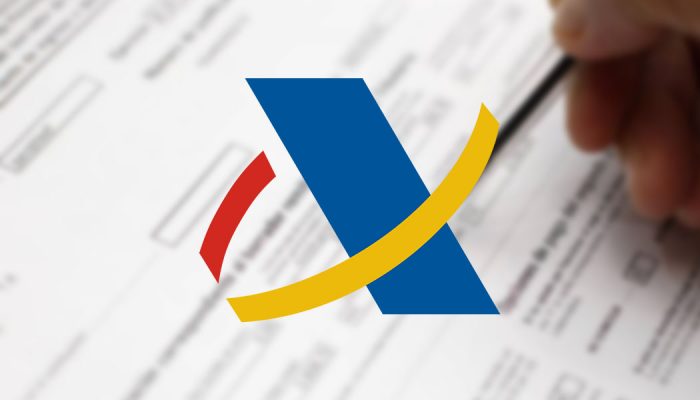Tax liability is one of those things that starters may find difficult to understand. From the very beginning there is need to pay some tax.!
The most frequent payments you might need to do are: IVA, income tax and “retention”.
Learn how they work.
IVA.
How does it work?
Simply put,the government uses our business to collect the IVA tax: we add an IVA charge (normally 21%) to our services ( a positive amount to be paid ) and pass that money to the ‘Hacienda’ each quarter. We ,of course, may have paid IVA on various services to our business which is a negative to reduce what we have to pay, leaving only the net amount to send to the Hacienda each quarter.
We pay as much as we collect. In one way or another. There is nothing left for us. Neither any loss.
Why sometime you have to pay IVA if you didn’t make any profit.
This could occur because some business expenses are exempt from IVA, for example social security payments and Salaries.
Example:
| Sales | 1000€ | IVA(+) 210€ |
| Suppliers | -800€ | IVA(-) 168€ |
| Social Sec | -250€ | |
| -50€ (loss) | IVA BAlance: +42€ (to pay) |
;
What if the IVA balance is negative?
Any negative IVA balance from one quarter is carried forward to the next quarter. At the end of the year if there is still a negative balance you then apply for a refund.
Hacienda, by law, must refund the negative amount within six months or pay a low interest rate to you until they do refund it.
INCOME TAX.
On this subject we have to differentiate between corporation income tax and personal income tax applying to individuals, such as self-employed persons. In this article we are going to focus on the latter. And we will also distinguish between Direct Assessment and the Modulo System, which we will explain later on.
The idea is easy. Income – Business Expense = Profit.
Every quarter we have to pay 20% tax on the quarter profit. This amount is not the final tax to be paid. It could be less or it could be more. This is just an advance payment against the tax that will actually be calculated one year later. ( The tax year ends the 31st of December. During the months of May and June of the following year the actual income tax due is calculated in the RENTA tax return.)
No personal allowances are taken into account in the quarterly payment calculation
This means that if you are a working single mother with three children you pay the same as everybody else. All personal allowances ( children, medical bills, life insurance etc ) will be considered at the time of the Renta Tax return and, if applicable, you may receive a rebate.
This also means that if your overall annual profit is high, because you happened to have a very good year, and are therefore liable for a higher rate than the 20% tax rate you have paid each quarter, you will have to pay the difference owed at the time of RENTA.
Related: Autonomo Tax Liability. How much tax will I pay?
Finally, a few words on the ‘Modulo’ system. Under this system, your profit, and therefore the amount of tax, is assessed based on statistical information of your type of business rather than the actual figures from your business. Not every kind of business can be assessed this way.
The benefit is that if you make more than the ‘modulo’ system states for your business you pay no more; it’s tax free. The downside is that if your profit is lower than the ‘modulo’ then you will have paid more tax than you should have under the Direct Assessment system. On top of that you have to stay on the ‘Modulo’ system for a minimum of three years.
RETENTIONS -AMOUNTS WITHHELD TO PAY SOMEONE ELSE’S TAX.
This is a word coming from the Spanish “Retenciones” meaning “with-held tax”. Essentially this is a part of the payment owed to somebody else that is with-held in order to pay the other’s income tax.
There are some common situation where the law stipulates that the retentions has to be applied.
1) Employers with-hold part of the salary of his employee in order to pay the employees income tax.
2) Companies with-hold part of the payment due to self-employed individuals (autonomos) in order to pay the autonomo’s income tax.
In this case, it is the autonomo that has to include in the break-down of his own invoice the amount to be with-held. This is discussed in depth in the article What to include on an invoice.
3) Tenants with-hold part of the rent due to the owner in order to pay the owner’s income tax.
Except in the first case, where the employer produces the wage-slips, it the one issuing the invoices (autonomo, property owner) who includes in the invoice the applicable percentage of retention.
Let us take this last case to give an example:
How does retentions in rents work?
In this case, the rent ‘Retención’ is money withheld by the tenant in order to pay tax owed by the owner. As stated before, it is important to note that this amount belongs to the owner, not to the tenant.
Let’s put it in context. Owner and tenant agree on a rent of €500. Of course, IVA has to be added.(21%) Hence, the tenant expects a monthly bill of €605.
The examples that come next may not necessarily contain the current retention rates. See updates here.
The tax authorities require the tenant to retain 19% of the rental (19% of €500 = €95) and pay that direct to Hacienda. So out of the €605 owed to the owner the tenant actually pays only €510.00 direct to the owner and the €95.00 retention must be paid to Hacienda via any bank using tax form #115.
As this is done quarterly, the bill the tenant has to pay to Hacienda can be quite sizable, but we have to remember that it’s not his money anyway. Small comfort.
The owner invoice to the tenant should look like this:
Rent €500
IVA +€105
Ret – €95.00
Total: €510.00
So the tenant has to remember that when he pays his rent, he hasn’t paid the full amount yet , and still owes the taxman the €95.00 retention.
More info:What is the rent ‘retention’ and when does it apply?
 Limit Consulting
Limit Consulting

